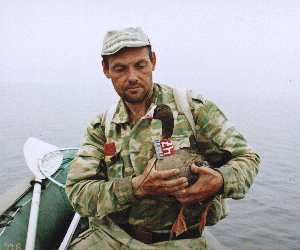 Field Guide to the Birds of Iraq - An important Milestone in Iraqi Conservation
Field Guide to the Birds of Iraq - An important Milestone in Iraqi ConservationBirdlife International and Nature Iraq announced the publication of the first Arabic language field guide to the country's 387 recorded bird species. In fact the Field Guide to the Birds of Iraq is the first comprehensive, fully illustrated guide to any Arabic speaking country. The book has been a collaborative effort by Nature Iraq (I know Mudhafar Salim worked hard on it as well as other biologists and field workers), Richard Porter, author of the Field Guide to the Birds of the Middle East (recently released in Arabic) and Birdlife International. Funding for the project was provided by The Canada-Iraq Marshlands Initiative, the Ornithological Society of the Middle-East, Avifauna and The World Bank.
Since I first heard of the project from my friend Mudhafar, I have felt that this would be an important and exciting step in increasing the Iraqi public's awareness of their natural treasures and giving added visibility to the country's environmental movement. With a field guide it becomes possible for large numbers of people to participate in studying the country's birds as the knowledge of identification is spread. Now we need an Iraqi eBird for large scale collection of observation data.
I naturally thought of my experience as a child looking through field guides and the spark it provided to my interest in nature. I also thought of my experience with children in Iraq when I visited schools to bring books and supplies. At the very least each school in Iraq should have a copy of this book. I imagine in the next few months and years, a child will crack open the Field Guide to the Birds of Iraq for the first time. First they will look for the familiar birds, the Laklak (White Stork), the Hudhud (Hoopoe) or the Wood Pigeon. They will come back to the book and see birds they never knew existed. For a few, the spark of curiosity will become a flame of a lifelong passion, perhaps when they realize these exotic creatures live, not in some far-off place, but in their own country. I fully expect that some of Iraq's next generation of naturalists and scientists will have started their journey when they discovered the world was larger and more wonderful than they had imagined when they opened this book.
I've discussed the idea of raising money to enable the widest distribution of this important book with a few people both here and in Iraq. I think it is a very important project and I'll follow up with some details as they are worked out.
Again, congratulations to all involved in the publication. I pray you reap a hundred-fold for your efforts.
